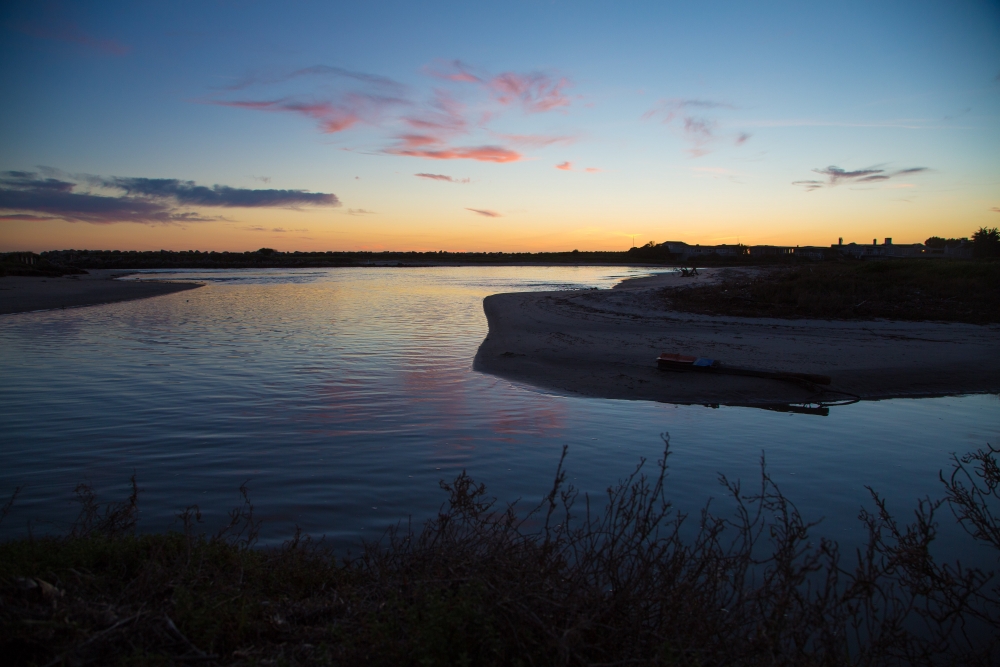
Where River Meets Ocean

They exist all over the world, are among the most productive ecosystems on Earth and are home to a diverse array of wildlife. They also are essential to the global economy. They are estuaries — coastal embayments where fresh river water and salty ocean water meet.
But this simple definition belies the estuary’s complexity, diversity and importance to human sustainability.
“Estuaries are tricky in that they don’t fit well with terrestrial science or oceanography,” said Nick Nidzieko, a professor in the Department of Geography at UC Santa Barbara. Call them deltas, sloughs, salt marshes, harbors, sounds or bays, estuarine systems are neither fully marine nor fully riverine or riparian. This mixing of characteristics, diversity of habitats and variability in quality have made it difficult for scientists to draw conclusions about how these systems collectively contribute to global processes, particularly with regard to carbon and nutrient cycling through the coastal zone.
“We refer to an ecosystem’s metabolism as the total metabolism of everything in an estuary — all the animals, all the plants,” Nidzieko said. “It is an integrated measure of how much organic carbon is being produced or consumed in a place.” Estuaries, which are important to fisheries, transportation, shipping and wastewater disposal, have largely been studied on an individual basis, he explained, but their combined impact on the ocean’s carbon budget is still something of a black box.
It turns out, according to Nidzieko’s observations, that larger estuarine systems are typically less productive per unit size than the smaller ones. The paper, "Allometric scaling of estuarine ecosystem metabolism," is published in the Proceedings of the National Academy of Sciences.
The larger-is-more-efficient concept has its roots in evolutionary biology.
“This is well-known with animals,” he said. Known as Kleiber’s Law, the idea is that an animal’s metabolic rate scales to the three-quarters power of its mass. The larger the animal, the slower its metabolism. “A mouse lives for a couple years, its heart beats rapidly and it needs to eat constantly to live. An elephant eats occasionally, its heart beats slower and it lives for decades,” Nidzieko explained.
The same three-quarter scaling applies to estuaries. After studying a series of published ecosystem metabolism investigations, Nidzieko determined that the productivity of an estuarine system often does not scale linearly with size; larger, deeper estuarine systems are somewhat less productive per unit size than their smaller, shallower counterparts.
“The explanations for why the elephant has a slower metabolism than a mouse provides the same answer for why San Francisco Bay isn’t quite as productive, per unit size, as Goleta Slough,” Nidzieko said. “This is basically driven by the physics. This paper shows that metabolism is related to nutrient residence time — in other words, how fast nutrients move through the system.”
The findings may impact the way estuaries are assessed for their benefits and their place in the larger global cycling of carbon, as well as the planning that goes into the uses of these areas. Factoring size and depth into the calculations of an estuary’s productivity may also allow scientists to look back into what may have been lost as a result of incursion into coastal wetlands — historically targets of development — such as the San Francisco Bay, ports and harbors around the world, and wastewater treatment systems.
Additionally, these results suggest that multiple remediation projects of smaller estuarine systems may have relatively more impact than a single project in a bigger system. But Nidzieko is quick to point out that larger systems can also do things that smaller systems can’t, particularly in the realm of biodiversity.
“But this may provide some guidance into how to design or assess protected areas,” he said. In the near future Nidzieko plans to take this concept from the shallow estuary scale to the other extreme — the ocean basin scale.
“The same pattern holds but we don’t yet understand quite why,” he said.



